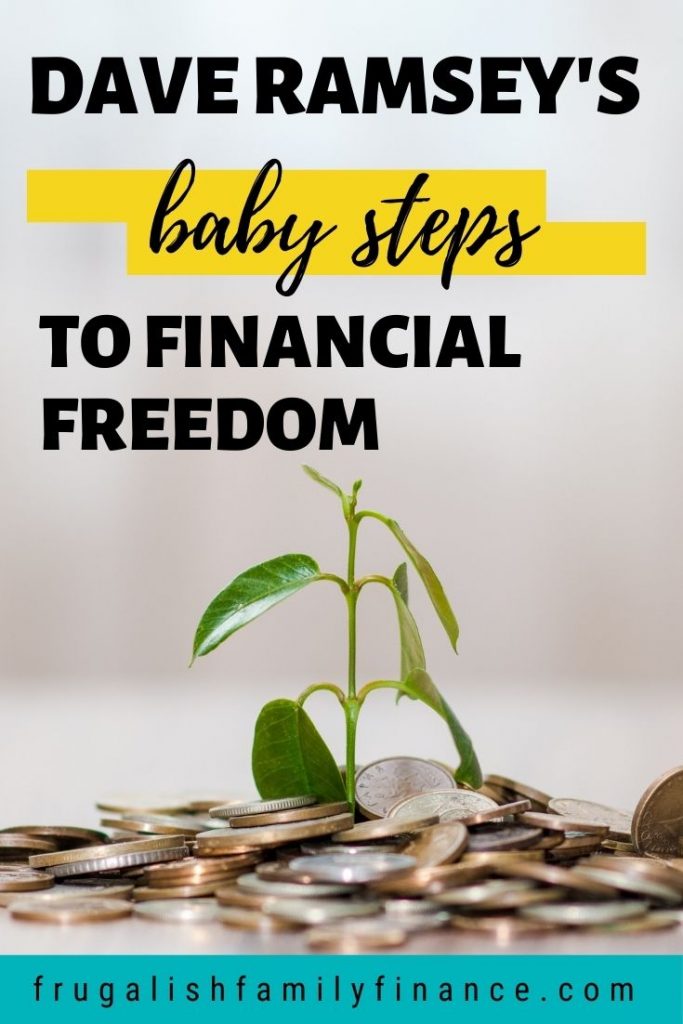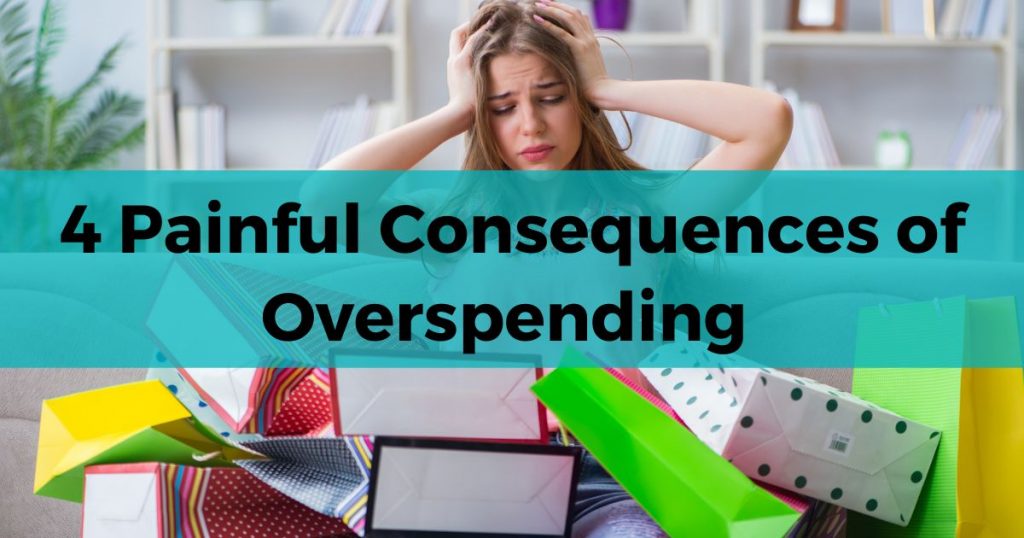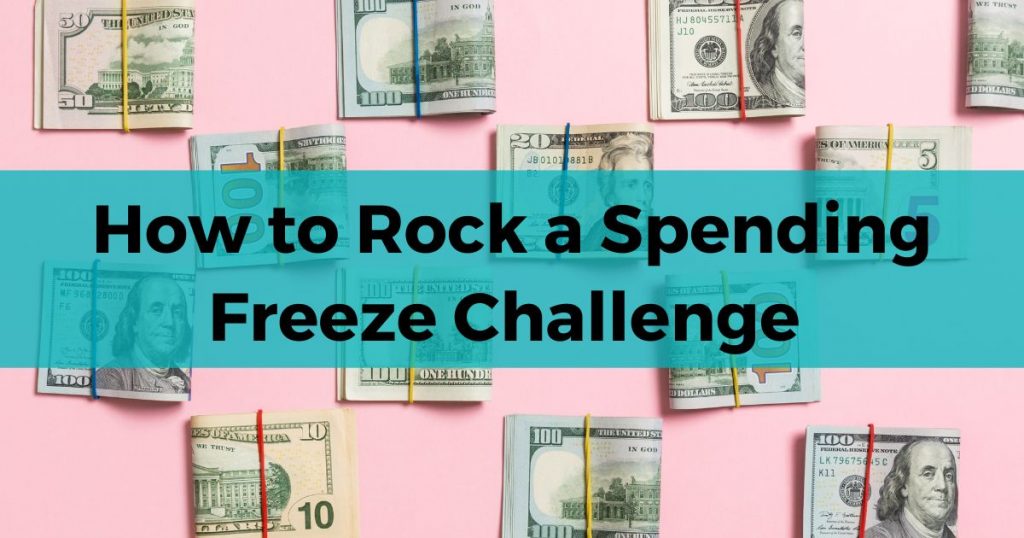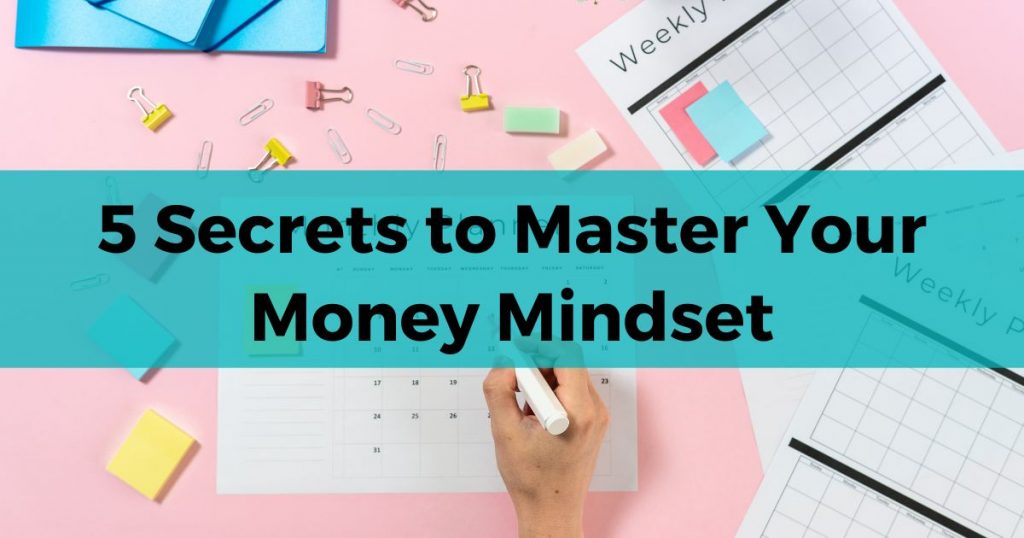You may or may not have heard of Dave Ramsey, and the controversial opinions people have for him. Dave is a no-nonsense personal finance expert, who went through his share of financial troubles, including bankruptcy.
These financial hardships motivated him to gain control of his finances, and develop a financial plan that has helped nearly six million people to better manage their money.
And I am so proud to say we are part of that statistic. Dave Ramsey’s seven financial baby steps changed our lives!
Long story short, my husband and I made a few bad financial decisions as young adults (like most people). I had a ton of credit card debt and student loans, and my husband had a rental property that he couldn’t get rid of (thanks to the housing crash of 2008).
This debt followed us for many years, and then in 2019, we were hit with a series of costly repairs. A new roof, new HVAC units, and repairs to a vandalized rental property all in a three-month timeframe.
To say we were overwhelmed with financial stress is an understatement. Nonetheless, we had a decision to make. Continue to accumulate debt and live paycheck to paycheck or change our financial future.
Thank God, we stumbled across the financial baby steps because who knows where we would be…probably living life broke.
With the knowledge we gained from taking Financial Peace University and following the Baby Steps, we got rid of $227,000 of debt and are continuing through to build wealth.
So, if you need a little kick in the financial pants, keep reading to see how the financial baby steps can help your family finances!
Disclaimer: This post may contain affiliate links. This means I receive a small commission, at no extra cost, if you purchase using the links below. Please see my earnings disclaimer for more details.
Table of Contents
What are Dave Ramsey’s Baby Steps?
The Baby Steps are a program designed by Dave Ramsey to help people manage their finances better by paying off debt, saving, and building wealth.
It’s a simple step-by-step guide to financial stability and complete freedom.
- Save $1000 starter emergency fund.
- Pay off all debt except for your house.
- Save 3-6 months’ worth of emergency savings.
- Invest 15% of your income into retirement.
- Save for your children’s education.
- Pay off your home early.
- Build wealth and give.

Why do the Baby Steps work?
The Baby Steps program works because it’s a simple straightforward blueprint for building wealth. The steps build off of each other, leading you to financial freedom.
Is it easy? HELL NO! But, the financial baby steps help you to build the discipline you need to achieve financial independence.
Deep dive into Dave Ramsey’s 7 Baby Steps
Let’s take a closer look at each step.
Baby Step 1: Save $1000 starter emergency fund
The first baby step is to save $1000 in a starter emergency fund. This is the key to not taking on more debt.
Now, I have seen people argue that $1000 is not enough, and I see their point. But, did you know 56% of Americans can’t handle a $1000 emergency without taking on consumer debt (CNBC)?
Yes, $1000 will not cover every emergency, but most people struggle to save more. So, a $1000 starter is a more realistic amount to help cover unexpected expenses while you get out of debt as quickly as possible.
How do you save $1000?
Now $1000 is a good chunk of money, especially when you have very little to squeeze from a tight budget. So, here are some ways to get your emergency fund started.
Budget
The first and most important thing you need to do to take control of your money is to start a zero-based budget.
Creating a monthly budget and tracking your spending, helps you see where to best spend and save your money. When we first started budgeting, we were shocked at how much we spent on things we didn’t need.
A budget helps you to see your whole financial situation. When you sit down and look at your budget, you can better plan for every dollar.
Pay the minimums
Only pay the minimum payments on your debt until you can save $1000. In the next step, you’ll be paying extra toward your debt.
So, it’s ok to only pay the minimums, for now, to help you save that $1000 quicker. But, make sure to pay on time, so you don’t get stuck with late fees.
Cut cost
After creating your budget, look where you can make budget cuts. Trimming the fat in your budget is a great way to save for your starter emergency fund. Some things to look for are…
- gym memberships
- subscriptions
- eating out (check out these cheap meals to make at home)
- cutting your grocery budget
- bad habits
Related:
How To Create A Zero-Based Budget To Simplify Your Finances
12 Reasons Why Budgets Fail And How To Fix It
How to Avoid Budget Burnout: 11 Tips for Staying Motivated
12 Important Reasons And Benefits Of Tracking Your Expenses
46 Super Frugal Meals That Won’t Break The Bank
The Art of Meal Planning for Busy Moms (And Dads)
Negotiate bills
Call your providers and try to negotiate a lower rate. Most times, you can get a better deal.
- Phone company
- Internet provider
- Cable provider
- Insurance company
- Credit card company
You can also use apps to help negotiate.
- Rocket Money helps you to manage and cancel your subscriptions.
- One Main Trim analyzes your spending to see where you can save and negotiates lower bills for you without the hassle of talking to someone (which we all know is a freaking pain).
Cashback apps
Use cashback apps like Ibotta to save money on your everyday shopping. Cashback apps can help you get coupon savings without the clipping and help you stretch your money a bit further.
Make sure to check out the $1000 Emergency Fund Challenge to find out more ways to save your starter emergency fund.
Related:
12 Awesome Ibotta Tips And Tricks To Earn The Most Cash Back
13 Best PayPal Reward Apps To Earn Cashback On Your Shopping
Baby Step 2: Pay off all debt except for your mortgage
The second step is to pay off all your debt (credit cards, personal loans, student loans, etc.), except your mortgage.
The strategy for paying off debt in the baby steps is known as the debt snowball method. In short, you start with paying off the smallest debt first, and work your way up to the highest amount of debt.
It’s called the debt snowball because as you pay off your debt, the amount you can pay toward the next debt increases.
It’s like a snowball rolling down a hill. Starting with the smallest amount first, you’ll have more money to pay towards your larger debts when you get there.
This is not the debt avalanche that starts by paying off high-interest debt first.
Some argue that with the debt snowball you pay more interest, and Dave Ramsey doesn’t disagree.
But, his baby steps take a more psychological approach. By starting and paying off the smallest balance, you get a “win” faster, which keeps you motivated.
Eventually, you start seeing the light at the end of the tunnel. So, here are a couple of ideas to increase your income and start paying down your debt.
Related: How to Slay Your Debt Using the Debt Snowball
Minimize and sell your stuff
We found that embracing a minimalistic mindset helped us save money because we weren’t consuming as much. It also helped us realize we could live with a lot less.
So, we got rid of and sold a ton of stuff to make extra money that we put toward our debt.
Related:
Turn Clutter into Cash: How to Declutter and Make Money
Ultimate Guide For How To Get Sales On Poshmark In 2023
How to Minimize Your Life and Maximize Your Happiness
Pick up a second job or a side hustle
To pay extra toward debt, you have to either make cuts in your budget or increase your income (or both). So, turn a hobby into a side hustle or take on a second job.
- Drive for Lyft or Uber
- Deliver food with Doordash or Ubereats
- Grocery shop with Instacart
Sell a car
This may sound crazy, but if your car payment is the same as a small mortgage, you may want to consider selling it.
Get rid of that ridiculous car payment and get something more affordable (preferably something you can pay cash for to eliminate car loans).
Sell a house
Another somewhat extreme way to get rid of debt is to sell your house. If you’re struggling to make your mortgage payment because you’re house-poor, this may be an idea to think about.
Part of our debt was a rental property we couldn’t get out from under for 12 years. Finally, we built enough equity in it to break even when we sold it.
After we sold the townhouse, we were $190,000 lighter in debt. We would have never sold it if we weren’t determined to become debt-free.
Baby Step 3: Save 3-6 months of expenses in your emergency fund
The third step is to finish saving your fully funded emergency fund. You should save 3-6 months’ worth of expenses in a savings account designated for emergencies only.
We saved for a six-month emergency fund because we tend to have really crappy luck. So, we wanted a little extra cushion to help us stay prepared for the unexpected.
Baby Step 3b: Save for a house
There is a subset of Baby Step 3, and that is saving for a house. If you don’t already own a home, this is where you would save for your down payment.
Even Dave Ramsey acknowledges you may need to take on debt to buy a home, which is why paying off your home is a later step and not included in Baby step 2.
Therefore, you’ll need to set up a sinking fund to save the recommended 20% for a down payment.

Baby Steps 4, 5, and 6
Baby steps 4-6 can be done in conjunction. You just have to make sure to prioritize them in the same order.
For example, after you save for retirement (step 4), save for your children’s college fund (step 5), and then with any left pay extra on your mortgage payments (step 6).
Baby Step 4: Save 15% of your household income for retirement
The fourth step is to save 15% of your household income toward retirement. This 15% can be contributed toward your 401k, put into a Roth IRA, or another type of investment.
Basically, this step is a set it and forget it type of thing. You can either set it up to come directly from your paycheck or automatically withdraw it from your account to a retirement account.
When we got to this step, we felt it was a good decision to meet with a financial adviser (we found ours through the smartvestor program).
Being in our 30s, we felt we were behind because we had no retirement savings other than my husband’s military pension.
Baby Step 5: Save for your kid’s education
Baby Step 5 is saving for your children’s education. There are a couple of options for saving for their future education.
Education Savings Accounts (ESA)
An Education Savings Account allows you to contribute up to $2,000 a year per child and grow tax-free.
529 Plan
A 529 is an education savings account that allows you to contribute more than an ESA and grow tax-free.
Uniform transfer to minors act (UTMA)
A UTMA is a savings account managed by a parent until the child is of a certain age. When the child reaches the age of transfer, they are then in control of how the money is spent (education or other).
Trying to figure out how much to save for a college or trade school education is a really difficult task. It’s hard to project college tuition.
But after research, we decided on an amount we wanted to save for each child and broke it down into a yearly amount we needed to save for them.
Related:
Everything You Need To Know About Sinking Funds For Beginners
23 Sinking Fund Categories To Help You Budget Better
Baby Step 6: Pay off your home early!
Step six is to pay off your home early. This one is pretty self-explanatory. You pay extra on your mortgage until you pay it off. You can do this as quickly as you want.
Some people will go full force whereas others have a certain amount they want to pay extra a month. It’s ok to live a little, but the idea is to pay your house off as early as possible.
Baby Step 7: Build Wealth and Give
Baby Step 7 is the best step of all! You’ll be 100% debt-free, and you can focus your money on investing to build wealth and blessing others with generosity.
Because you’ll be debt-free, you can be as conservative or risky as you want with investing your money. Some ways to invest to build wealth are:
- Stocks and mutual funds
- Real Estate
- Commodities
However you want to build wealth, I recommend meeting with a financial advisor to discuss your plans and financial goals so you can better reach them.
Resources to help navigate your debt-free journey
If you are wanting to learn more about Dave Ramsey’s financial baby steps. Here are some great resources to learn more.
Dave Ramsey books to read
Dave Ramsey budgeting tool
- Everydollar app (free to use but also has a paid premium version)
Related: How To Use EveryDollar App To Better Manage Your Money
Dave Ramsey Programs
- Financial Peace University (the older version on Amazon)
- Ramsey + which includes Financial Peace University, the premium version of Everydollar app, extra digital courses, and more (you can get a 14-day trial to watch then subscribe or cancel if you can get through the Financial Peace University videos during the trial).
Conclusion
We tried many times before to pay off debt. It wasn’t until we decided to get serious and put the baby steps into action that we were able to finally succeed.
There are some Dave Ramsey naysayers out there and to each their own because personal finance is just that…personal.
But, for most people that are struggling with their finances, the financial baby steps are an easy-to-follow, tried and true way of reaching financial freedom.
The baby steps were invaluable for my family, and possibly could be for yours too.
What do you think about the baby steps? Leave a comment below!






Small steps to a bigger future! Love your tips on finance.
Absolutely! Glad you found them helpful!
I’ve heard about these steps before but it was great to hear about your experience too! Congratulations on managing to get rid of big debt and good luck with your journey of building wealth! 🙂
Thanks for reading!
Dave Ramsey’s baby steps changed our life! If anyone is considering following his plan, just do it!
That’s awesome!
Just what I need. I’m saving this for future read. Thank you
Glad you found it helpful!
Getting your financial house in order brings so much peace. Well done!
Absolutely! Thanks for reading!
I love this post! We did Dave Ramsay’s baby steps early on in our marriage…best thing we ever did! We have stayed away from credit card debt for 20 years!
Thank you! By far the best thing we ever did too!
Love the idea of cutting costs, especially if you’re to seek the minimalism route!
Great post! I completely agree with taking baby steps and the key is to pay off all debt first and having enough emergency funds before saving for retirement and kid’s education. Thank you for sharing this!